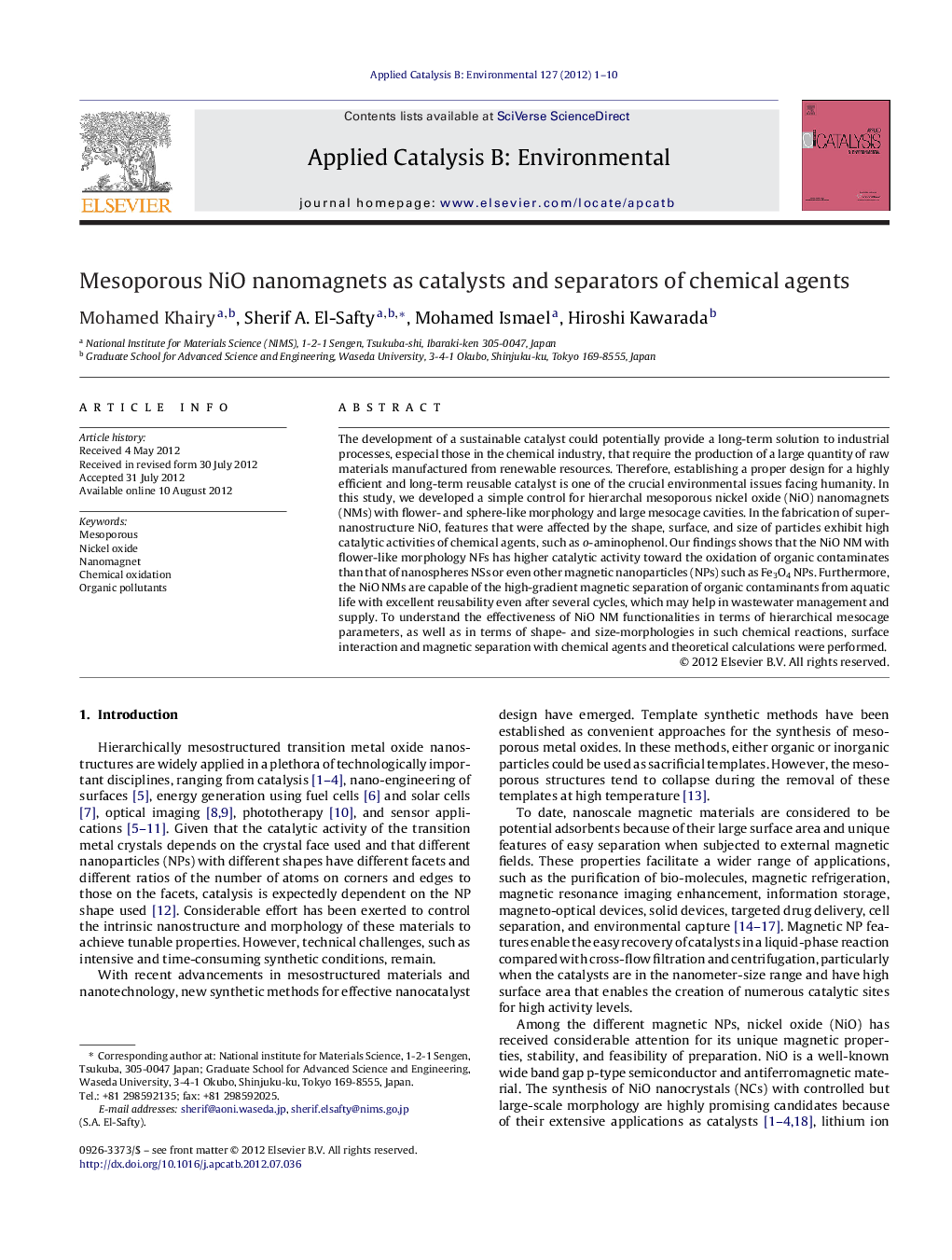| Article ID | Journal | Published Year | Pages | File Type |
|---|---|---|---|---|
| 46256 | Applied Catalysis B: Environmental | 2012 | 10 Pages |
The development of a sustainable catalyst could potentially provide a long-term solution to industrial processes, especial those in the chemical industry, that require the production of a large quantity of raw materials manufactured from renewable resources. Therefore, establishing a proper design for a highly efficient and long-term reusable catalyst is one of the crucial environmental issues facing humanity. In this study, we developed a simple control for hierarchal mesoporous nickel oxide (NiO) nanomagnets (NMs) with flower- and sphere-like morphology and large mesocage cavities. In the fabrication of super-nanostructure NiO, features that were affected by the shape, surface, and size of particles exhibit high catalytic activities of chemical agents, such as o-aminophenol. Our findings shows that the NiO NM with flower-like morphology NFs has higher catalytic activity toward the oxidation of organic contaminates than that of nanospheres NSs or even other magnetic nanoparticles (NPs) such as Fe3O4 NPs. Furthermore, the NiO NMs are capable of the high-gradient magnetic separation of organic contaminants from aquatic life with excellent reusability even after several cycles, which may help in wastewater management and supply. To understand the effectiveness of NiO NM functionalities in terms of hierarchical mesocage parameters, as well as in terms of shape- and size-morphologies in such chemical reactions, surface interaction and magnetic separation with chemical agents and theoretical calculations were performed.
Graphical abstract.Figure optionsDownload full-size imageDownload as PowerPoint slideHighlights► Hierarchical mesoporous NiO nano-flower and -sphere magnets were fabricated via simple method. ► The magnetic nanocatalysts show evidence of the activity toward chemical agents. ► The NiO nanomagnets retain their catalytic activity after several reuse cycles. ► The nanoflower magnets show high-gradient separation of organic contaminants from aquatic life.
